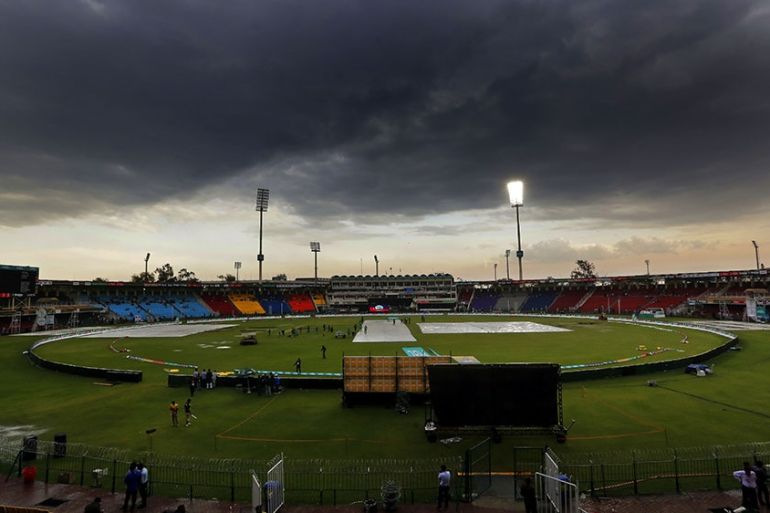UK: What impact is climate change having on cricket?
Rain-stopped play is not what you want to see if you’re a cricket fan. Could it become an increasingly common sight?

Cricket has always been a sport at the mercy of the weather.
In the 1930s, county cricket clubs in England were headed for financial ruin after a succession of wet summers. Twenty years later, persistent rain saw desperate clubs experiment with blankets, rubber mats and suction pumps.
Keep reading
list of 4 itemsWorld’s coral reefs face global bleaching crisis
Why is Germany maintaining economic ties with China?
Australia’s Great Barrier Reef suffers worst bleaching on record
As recently as the summer of 2012, three of England’s 13 One Day International events were abandoned due to rain, while no result was possible in two of their seven Test matches with West Indies and South Africa.
That’s why the sport must take notice of a report published by Climate Coalition, the UK’s largest climate change action group, in February.
The document names cricket as the sport that will be hardest hit by climate change in England, stating that “wetter winters and more intense summer downpours are disrupting the game at every level”.
That was reiterated by Glamorgan Head of Operations, Dan Cherry, who warned that climate change could “fundamentally change the game”.
“The less cricket we play, the fewer people will watch it, the less they will come to the ground and pay to enter, the less chance there is for young people to be inspired,” said Cherry.
This change, it seems, has already begun.
In international cricket, 27 percent of England’s home one-day internationals since 2000 have been played with reduced overs because of rain delays. The rate of rain-affected matches has more than doubled since 2011, with five percent of matches abandoned completely.
Part of the problem with climate change in England, though, is that it’s not always straightforward to identify.
“In this country, you’re relying on the weather,” says Steve Birks, head groundsman at Nottinghamshire.
British weather has always been famously unpredictable. But Birks, who will prepare the Trent Bridge pitch for England’s Test match with India in August, says there are subtle differences now.
“The rain is getting tropical; it is getting heavier,” he says. “We’re getting thunderstorms more often when it rains – I think that’s when you can tell the difference.”
Drainage systems are constantly being improved to cope. The cricket grounds at Lord’s and Trent Bridge are using state-of-the-art technology.
It does seem that the people running the game have also taken note of the problem. Recent years have seen the popularity of the shorter form of the game increase.
Twenty-over cricket is a massive money spinner and games can be completed in around three hours. There is even a proposal to implement a 100-ball version of the game (i.e. 15 overs plus a 10 ball set-up).
The shorter the game, the less chance of a total washout and hence loss of money.
Giannis Mantzaris contributed to this report from UK